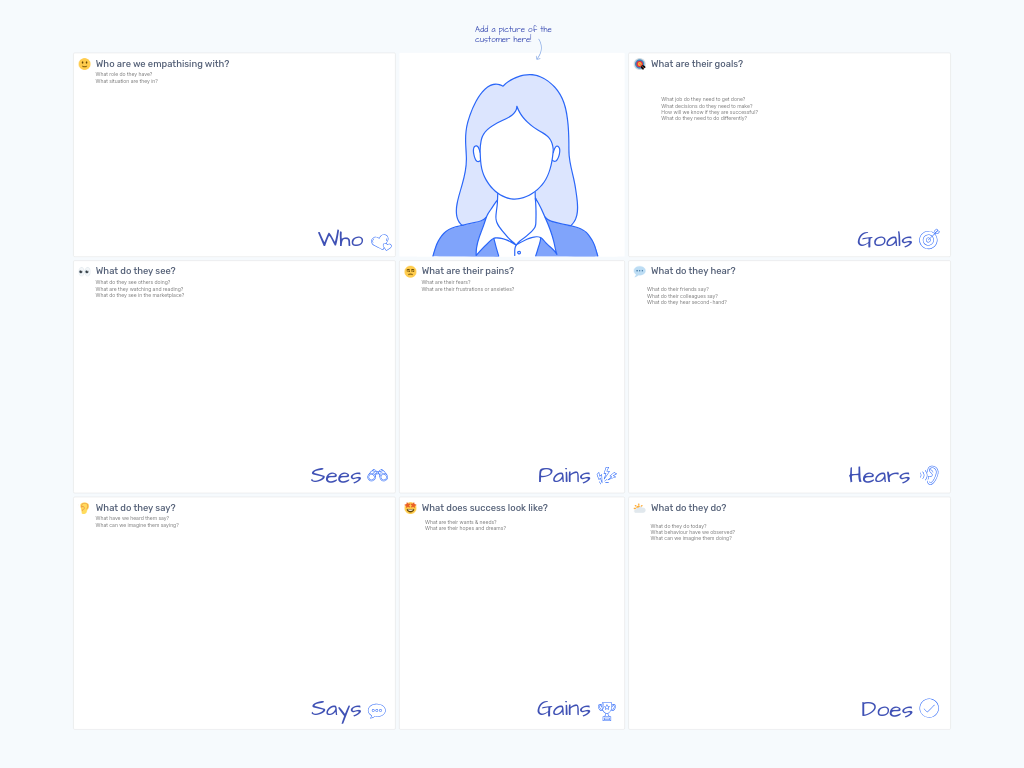Goal-Oriented Product Roadmap: Strategic Planning for Agile Product Teams
The Goal-Oriented Product Roadmap (GO Roadmap) is a strategic planning framework that shifts product development conversations away from dates and features toward strategic objectives and measurable outcomes. Developed by Roman Pichler, this collaborative template helps product teams align stakeholders, prioritize initiatives, and track progress through a clear, outcome-focused structure.
What Is a Goal-Oriented Product Roadmap?
A Goal-Oriented Product Roadmap is a strategic visualization tool that organizes product development around specific business outcomes rather than feature lists or rigid timelines. Unlike traditional roadmaps that focus primarily on features and deadlines, the GO Roadmap emphasizes the "why" behind each product initiative, linking development efforts directly to business goals.
The GO Roadmap consists of four key components arranged in a structured grid:
- Date/Timeframe - Flexible time horizons for each release or version
- Version Name - Identifiable names for each product increment
- Goals - The specific outcomes and value each version aims to deliver
- Features - The key capabilities (limited to 3-5) needed to achieve each goal
- Metrics - KPIs and measurements that determine if goals have been met
This structure maintains strategic focus while providing enough detail for teams to prioritize effectively.
Benefits & When to Use a GO Roadmap
The Goal-Oriented Product Roadmap is particularly valuable when:
- Your product development needs to align with broader business strategy
- Stakeholder conversations frequently derail into feature debates rather than strategic discussions
- You need to maintain flexibility in your planning while keeping strategic direction
- Teams are using Lean Startup, Scrum, or other agile methodologies
- You want to create accountability through measurable outcomes
Key benefits include:
- Strategic Alignment - Connects product development directly to business outcomes
- Stakeholder Communication - Creates a common language for discussing product direction
- Focused Development - Prevents feature bloat by limiting features to those that drive specific goals
- Outcome Measurement - Establishes clear metrics for success beyond feature completion
- Adaptive Planning - Provides structure without rigid commitments to specific implementation details
How to Run a GO Roadmap Planning Session
Prepare the Session (15 minutes)
- Share the template with participants beforehand
- Gather relevant product strategy documents and market research
- Identify key stakeholders who should participate
Establish Timeframes (20 minutes)
- Determine appropriate time horizons for your product (quarters, months, etc.)
- Add these to the "Date/Timeframe" row for each column
- Name each product version in the corresponding "Version Name" row
Define Goals (45 minutes)
- For each timeframe, identify the primary business outcome or value
- Focus on the "why" - what specific problem will be solved or opportunity captured?
- Keep goals specific, measurable, and aligned with overall product strategy
- Enter these in the "Goal" sections of the template
Identify Key Features (45 minutes)
- For each goal, determine 3-5 features or capabilities required to achieve it
- Resist the urge to add more than 5 features per goal to maintain focus
- Add these to the "Features" sections below each goal
- For each feature, ensure there's a clear connection to the goal above it
Establish Success Metrics (30 minutes)
- For each goal, define specific KPIs that will indicate success
- Make sure metrics are measurable and realistic
- Document these in the "Metrics" section of the template
- Review to ensure metrics truly demonstrate achievement of the goals
Review and Refine (30 minutes)
- Evaluate the complete roadmap for coherence and feasibility
- Ensure each column tells a compelling story of product evolution
- Check that the sequence of goals creates a logical progression
- Make adjustments based on team feedback and resource constraints
Tips for a Successful GO Roadmap Session
- Focus on outcomes over outputs - If discussions drift toward feature details, redirect to the goals and value being created
- Limit feature bloat - Be disciplined about the 3-5 feature rule; if you need more, your goals may be too broad
- Use clear, specific language - Avoid vague goals like "improve user experience"; instead, use "reduce customer support tickets by 25%"
- Think horizontally and vertically - Each column should stand on its own, but the entire roadmap should tell a coherent story of product evolution
- Set collaborative expectations - The GO Roadmap is meant to be a living document that evolves as you learn more
- Keep technical details light - This is a strategic document; save implementation specifics for your product backlog
- Connect to user value - Frame goals in terms of user benefits, not just business metrics
- Review regularly - Schedule quarterly reviews to assess progress and adjust the roadmap based on new insights
By focusing on goals rather than features, the GO Roadmap helps product teams maintain strategic alignment while adapting to changing market conditions and user needs. This makes it an ideal planning tool for agile product development environments.



